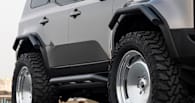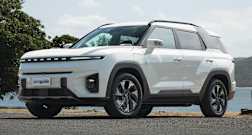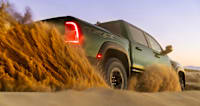Don't write them off just yet! Mazda might be late to the EV party, but that doesn't mean they're not happening.
At the launch of the CX-60 luxury mid-size SUV, Mazda executives explained to CarsGuide that it still has big EV plans in Australia, underpinned by an as-yet-unseen new scalable electric platform.
The platform is part of a multi-strategy approach by Mazda, which will maintain development in combustion and hybrid drivetrains, but recognises the importance of battery electrics as much of the world continues to move toward them en masse.
-
Better late than nEVer: How Mazda will accelerate its electric car plans to catch up to Tesla, Hyundai and others
-
Mazda moves up, BYD moves in: Japanese brand's premium push creates massive opportunity for Chinese affordable electric vehicle maker - and just wait until the ute gets here | Opinion
-
Is this how Mazda finally gets competitive in the EV game?
As explained by Mazda Australia managing director, Vinesh Bhindi: “Globally battery electric vehicles are the direction regulators or consumers want, and that’s increasing pretty quickly, including in Australia - BEV sales in Australia are now around eight per cent, most of which are taken up by one brand, being Tesla, who does about 60 per cent of that.
“But, If you look at the next period, at some point our government will have fuel efficiency standards which basically [marks] the transition towards battery electrics.”
“Mazda has a three phase strategy: The first phase is to acquire knowledge, knowhow, expertise, and supply lines particularly for batteries. That phase expands out to 2024 - 2025.
.jpg)
“For the 2026 - 2027 period there will be battery EVs available from the Mazda corporation. During that time there are expected to be advancements in battery technology, efficiency, etcetera.
“During this period we will be working on a new scalable architecture. Products on this platform are expected to be released during the third phase; from 2026 and out to 2030. It will be a fully fledged purely electric portfolio which will be rolled out [at that time].”
Koichi Namura, program lead for the CX-60, also confirmed that the scalable architecture being developed for this 2026 - 2030 period will be an internal Mazda design, and won’t borrow from other brands which it has partnered with in the past.
.jpg)
He also noted that despite Mazda launching a new combustion-first large car architecture for the CX-60, CX-80 and CX-90, that doesn’t necessarily mean the incoming electric vehicles will be replacements for its small car range.
“We have to have something which can cater for future applications in a variety of ways - in a flexible manner” he said.
While it might not be until after 2026 or 2027 that we start to see new-generation fully electric Mazdas, an alternate path is forming in the Chinese market, where the brand already offers a fully electric version of the CX-30, and recently announced at the Shanghai motor show it will introduce two more sedan-shaped cars co-developed with Changan Automobile by 2025.
.jpg)
Both will be offered with the choice of a fully electric or plug-in drivetrain, and patent drawings leaked earlier in the year suggest at least one model will be a Mazda3 or something similarly shaped and sized.
Meanwhile in Australia, Mazda says the only pure EV it offers here, the MX-30, is continuing to have its best year on record, although with the small SUV chalking up just 312 units in the first half of 2023, Mazda has a long way to go on the electric front.







.jpg)
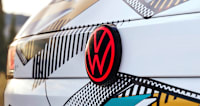

.jpg)
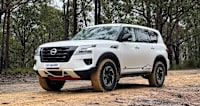

.jpg)
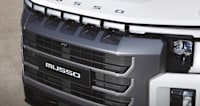

.jpg)




.jpg)
